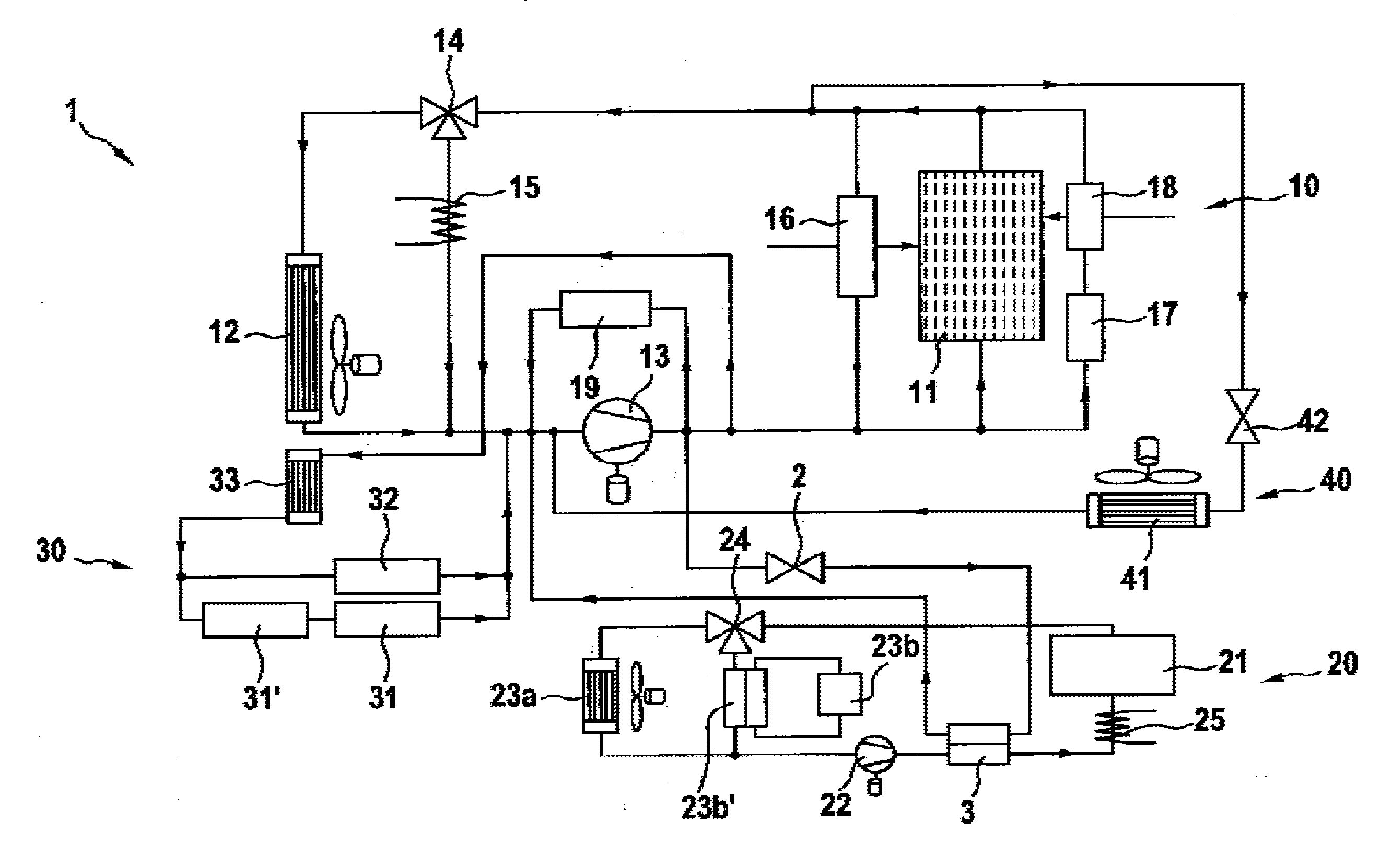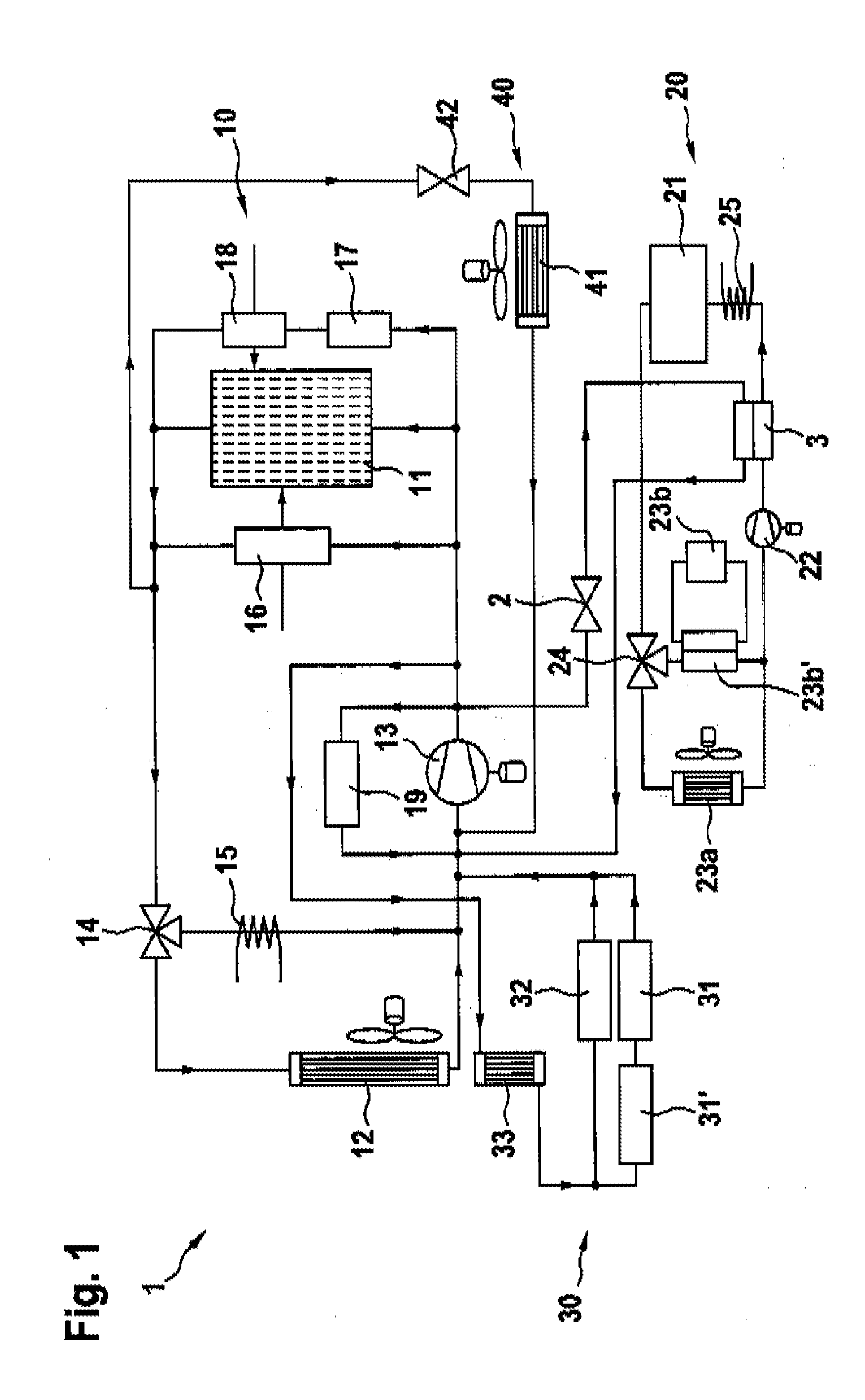Fuel cell cooling system with coupling out of heat
a fuel cell and heat coupling technology, applied in the field of cooling systems, can solve the problems of limited flow of cooling air that can be achieved in passenger vehicles, speed-dependent flow of cooling air, and difficulty in cooling fuel cell vehicles at nominal load under extreme environmental conditions, so as to relieve the load on the fuel cell cooling circuit, and reduce the effect of fuel cell cooling circuit load
- Summary
- Abstract
- Description
- Claims
- Application Information
AI Technical Summary
Benefits of technology
Problems solved by technology
Method used
Image
Examples
Embodiment Construction
[0044]FIG. 1 shows that the cooling system 1 comprises a fuel cell cooling circuit 10 for cooling the fuel cell system 11 and a battery cooling circuit 20 for cooling a battery 21, in which thermal energy can be exchanged between the fuel cell cooling circuit 10 and the battery cooling circuit 20 and, in particular, can be coupled from the fuel cell cooling circuit 10 into the battery cooling circuit 20. In particular, the battery 21 can be a traction battery or an electric traction accumulator, e.g. a nickel metal hydride battery or a lithium ion battery. In particular, the fuel cell cooling circuit 10 can be the main cooling circuit of a vehicle.
[0045]In order to regulate the flow of heat in terms of time and in terms of quantity, a valve 2, in particular a controllable valve, is provided between the fuel cell cooling circuit 10 and the battery cooling circuit 20. For example, this can be a shutoff valve or a thermostat based on an expanding material. The valve 2 is used, in parti...
PUM
| Property | Measurement | Unit |
|---|---|---|
| temperature | aaaaa | aaaaa |
| temperature | aaaaa | aaaaa |
| temperatures | aaaaa | aaaaa |
Abstract
Description
Claims
Application Information
 Login to View More
Login to View More - R&D
- Intellectual Property
- Life Sciences
- Materials
- Tech Scout
- Unparalleled Data Quality
- Higher Quality Content
- 60% Fewer Hallucinations
Browse by: Latest US Patents, China's latest patents, Technical Efficacy Thesaurus, Application Domain, Technology Topic, Popular Technical Reports.
© 2025 PatSnap. All rights reserved.Legal|Privacy policy|Modern Slavery Act Transparency Statement|Sitemap|About US| Contact US: help@patsnap.com


